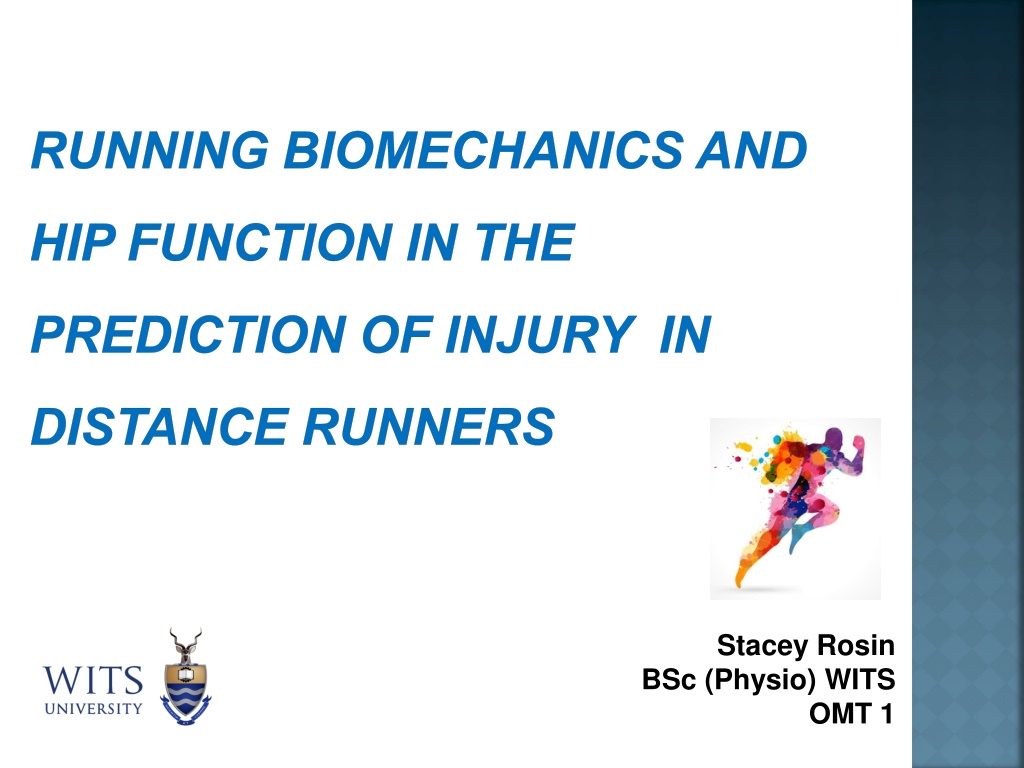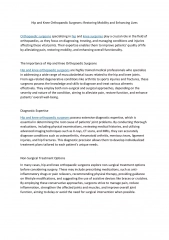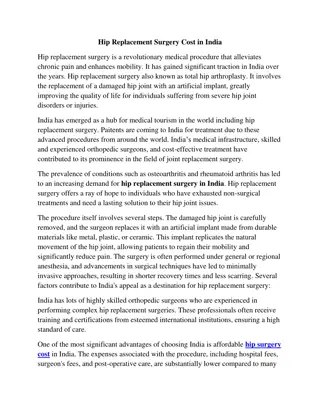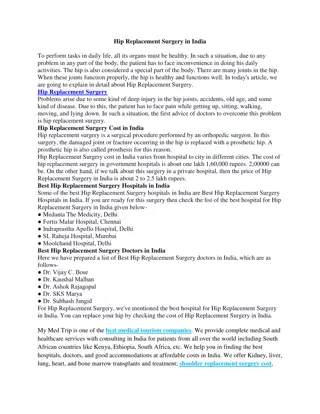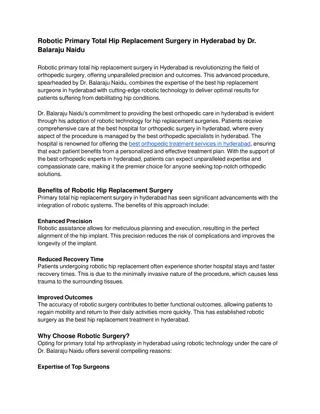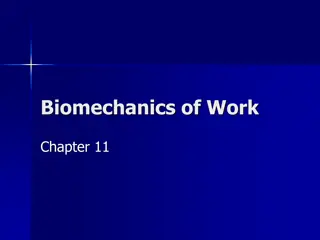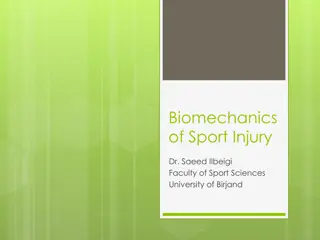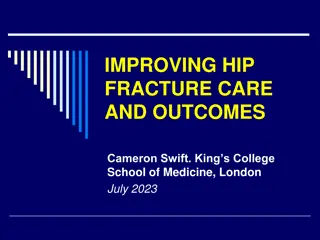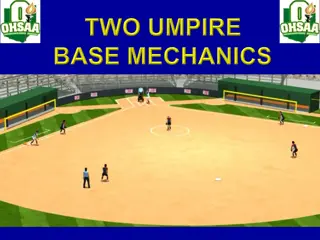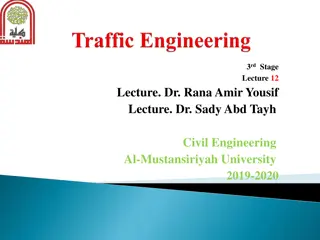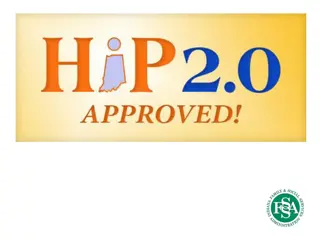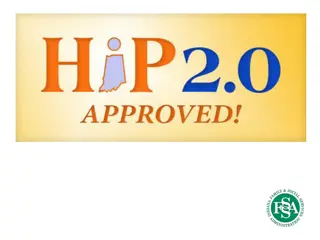Hip Function and Biomechanics in Predicting Injury for Distance Runners
This study delves into the relationship between proximal hip stability, biomechanics, and hip function in predicting injuries among distance runners. Highlighting the prevalence of running injuries and the significance of hip strength, it aims to establish injury predictors for South African distance runners. The investigation focuses on how hip function correlates with biomechanical and individual-specific attributes, shedding light on the role of proximal hip stability in addressing common running injuries like Patellofemoral Pain.
Download Presentation

Please find below an Image/Link to download the presentation.
The content on the website is provided AS IS for your information and personal use only. It may not be sold, licensed, or shared on other websites without obtaining consent from the author. Download presentation by click this link. If you encounter any issues during the download, it is possible that the publisher has removed the file from their server.
E N D
Presentation Transcript
RUNNING BIOMECHANICS AND HIP FUNCTION IN THE PREDICTION OF INJURY IN DISTANCE RUNNERS Stacey Rosin BSc (Physio) WITS OMT 1
#RUNSTUDY2017 The majority of runners are not elite athletes(Chorley et al 2002) 19.4% - 92.4% of runners injure themselves every year (van Gent et al 2015). Incidences of injury have not changed in the past 3 decades (Mann et al 2014; Rixe et al 2012; Subotnik 1985; Hall et al 2013) even though the sport has grown. .
#RUNSTUDY2017 The most common presenting running injury is Patellofemoral Pain (Lopeset al 2012, van Get et al 2015; Barton et al 2009; Lewinson et al 2013; Murphy et al 2013). Patellofemoral Pain specifically (Lankhorst et al 2015; Barton et al 2009) and knee injuries in general (Heinert et al 2008) have been shown to be related to lack of proximal hip strengthHeinert et al 2008) , more specifically, to Gluteus Medius weakness (Lankhorst et al 2015; Barton et al 2013; Heinert et al 2008; Barton et al 2009).
#RUNSTUDY2017 Question: Is proximal hip stability the source of patellofemoral pain or the result of the injury? (Barton et al2013) HIP STABILITY INJURY
#RUNSTUDY2017 Thus it is important to investigate Proximal Hip Stability (Barton et al 2009; Barton et al 2013; Heinert et al 2008) in runners (Bartoin et al 2009; Paluska 2005) more thoroughly. Biomechanics : Kinetic & Kinematic Participant Specific Characteristics & Training habits Hip Function AND To investigate how hip function relates to the Biomechanical and Participant specific information for an individual runner(Heinert et al 2008; Paluska 2005) .
#RUNSTUDY2017 The aim of this study is to establish injury predictors in South African distance runners. Injury predictors need to be established for the purposes of clinically sound assessment / screening and rehabilitation of distance runners (van der Worp 2012; van Gent 2015) .
#RUNSTUDY2017 Inclusion Criteria Male or Female distance runners ( 21km +) Exclusion Criteria Participants who are currently injured according to the study s definition of injury ie. Are unable to run Participants with a history of injury / niggle(s) Participants with gross pathology and / or orthoses eg. Amputees / joint arthroplasty or neurological disorders Participants who have had any significant surgical intervention to the lower extremity Participants who did not consent to the study
#RUNSTUDY2017 EMG / Electromyography EMG analysis will be conducted by using the 8 Sensor Trigno Wireless EMG Set (Analogue and Digital Version). Muscle activity will be recorded bilaterally using surface electrodes on the following muscles:
#RUNSTUDY2017 Rectus Femoris
#RUNSTUDY2017 Gluteus Medius and Maximus
#RUNSTUDY2017 Biceps Femoris / Hammies
#RUNSTUDY2017 X-SENS SUPA SUIT
#RUNSTUDY2017 Avatar Config.
#RUNSTUDY2017 Y-Balance Test Dynamic stability of the lower extremity (Byrnes et al 2010; Gribble et al 2012; Coughlan et al 2014).
#RUNSTUDY2017 Single Leg Squat Possible patellofemoral pathology (Lankhorst et al 2015; Barton et al 2012) and or glut med weakness (Lankhorst et al 2015;Barton et al 2012). Single leg stance is a part of running gait
#RUNSTUDY2017 Injury, Socio-demographic and Training related Data The ULTRA questionnaire (Hoffman and Krishnan 2013): Permission obtained to use the ULTRA questionnaire (United States). Information regarding socio-demographics, body characteristics, nutritional needs, medical needs, training workload, and exercise related injuries. An injury questionnaire: Evaluate the nature, onset and severity of any injuries sustained in the last 6 months. .
#RUNSTUDY2017 No unreasonable additional workload will be placed on the participants thereby minimising risk of Injury. Information collected will be used in this study only and not circulated by the researcher. Anonymity will be insured as each participant is assigned a study number and only the researcher will have the key to the study numbers. Each participant will receive a recording of their participation in the study as well as feedback on ways in which to improve.
#RUNSTUDY2017 THANK YOU
REFERENCES Altman, A. R., & Davis, I. S. (2012). Barefoot Running: Biomechanics and Implicationas for Running Injuries. Current Sports Medicine Reports; 11 (5) , 244- 250. Barton, C. J., Lack, S., Malliaras, P., & Morrissey, D. (2013). Gluteal muscle activity and patellofemoral pain syndrome: a systematic review. British Journal of Sports Medicin; 47 , 207-214. Barton, C. J., Levinger, P., & Menz, H. B. (2009). Kinematic gait characteristics associated with patellofemoral pain syndrome: a systematic review. Gait & Posture; 30 , 405-416. Chorley, J. N., Cianca, J. C., Divine, J. G., & Hew, T. D. (2002). Baseline Injury Risk Factors for Runners Starting a Marathon Training Program. Clinical Journal of Sports Medicine; 12 , 18-23. Coughlan, G. F., Fullam, K., Delahunt, E., Gissane, C., & Caulfield, B. M. (2012). A Comparison Between Performance on Selected Directions of the Star Excursion Balance Test and the Y Balance Test. Journal of Athletic Training; 47(4) , 366-371. Daly, C., McCarthy Persson, U., Twycross-Lewis, R., Woledge, R., & Morrissey, D. (2015). The Biomechanics of running in athletes with previous hamstring injury: A case-control study . Scandinavian Journal of Medicine and Science in Sports , 1-8. Davis, I. S. (2014). The Re-emergence of the Minimal Running Shoe. Journal of Orthopaedic & Sports Physical Therapy, 44 (10) , 775-784.
REFERENCES Ellapen, T. J., Satyendra, S., Morris, J., & van Heerden, H. J. (2013). Common running musculoskeletal injuries among recreational half-marathon runners in KwaZulu-Natal. South African Journal of Sports Medicine; 25 (2) , 39-43. Ferber, R., Kendall, K. D., & McElroy, L. (2010). Normative and Critical Criteria for Iliotibial Band and Iliopsoas Muscle Flexibility. Journal of Athletic Training; 45 (4) , 344-348. Filipa, A., Byrnes, R., Paterno, M. V., Myer, G. D., & Hewett, T. E. (2010). Neuromuscular Training Improves Performance on the Star Excursion Balance Test in Young Female Athletes. Journal of Orthopaedics and Sports Physical Therapy , 551-558. Gribble, P. A., Hertel, J., & Plisky, P. (2012). Using the Star Excursion Balance Test to Assess Dynamic Postural-Control Deficits and Outcomes in Lower Extremity Injury: A Literature and Systematic Review. Journal of Athletic Training; 47 (3) , 339-357. Hall, J. P., Barton, C., Jones, P. R., & Morrissey, D. (2013). The Biomechanical Differences Between Barefoot and Shod Distance Running: A Systematic Review and Preliminary Meta-Analysis. Sports Medicine; 43 , 1335-1353. Heinert, B. L., Kernozek, T. W., Greany, J. F., & Fater, D. C. (2008). Hip Abductor Weakness and Lower Extermity Kinematics During Running. Journal of Sport Rehabilitation , 243-256.
REFERENCES Hoffman, M. D., & Krishnan, E. (2013). Exercise Behaviour of Ultramarathon Runners: Baseline Findings From the ULTRA Study. Journal of Strength and Conditioning Research; 27 (11) , 2939-2945. Hopper, D., Deacon, S., Das, S., Jain, A., Riddell, D., Hall, T., et al. (2005). Dynamic soft tissue mobilisation increases hamstring flexibility in healthy male subjects. British Jourmal of Sports Medicine , 594-598. Ireland, M. L., Willson, J. D., Ballantyne, B. T., & Davis, I. M. (2015). Hip Strength in Females With and Without Patellofemoral Pain. Journal of Orthopaedic and Sports Physical Therapy; 33 , 671-676. Lankhorst, N. E., Bierma-Zeinstra, S. M., & van Middelkoop, M. (2013). Factors associated with patellofemoral pain syndrome: a systematic review. British Journal of Sports Medicine; 47 , 193-206. Lewinson, R. T., Fukuchi, C. A., Worobets, J. T., & Stefanyshyn, D. J. (2013). The Effects of Wedged Footwear on Lower Limb Frontal Plane Biomechanics During Running. Clinical Journal of Sports Medicine; 23 (3) , 208-215. Lopes, A. D., Hesoanhol Junior, L. C., Yeung, S. S., & Pena Costa, L. O. (2012). What are the Main Running-Related Musculoskeletal Injuries? A Systematic Review. Sports Medicine; 42 , 891-905. Lorimer, A. V., & Hume, P. A. (2014). Achilles Tendon Injury Risk Factors Associated with Running. Journal of Sports Medicine; 44 , 1459-1472.
REFERENCES . Lun, V., Meeuwisse, W. H., Stergiou, P., & Stefanyshyn, D. (2004). Relation between running injury and static lower limb alignment in recreational runners. British Journal of Sports Medicine;38 , 576-580. Mann, R., Malisoux, L., Nuhrenborger, C., Urhausen, A., Meijer, K., & Theisen, D. (2015). Association of previous injury and speed with running style and stride-to- stride fluctuations. Scandinavian Journal of Medicine & Science In Sports , 1-8. Moen, M. H., Reurink, G., Weir, A., Tol, J. L., Maas, M., & Goudswaard, G. J. (2014). Predicting return to play after hamstring injuries. British Journal of Sports Medicine; 48 , 1358-1363. Murphy, K., Curry, E. J., & Matzkin, E. G. (2013). Barefoot Running: Does it Prevent Injuries? Journal of Sports Medicine; 43 , 1131-1138. Nigg, B. M. (2001). The Role of Impact Forces and Foot Pronation: A New Paradigm. Clinical Journal of Sport Medicine;11 , 2-9. Paluska, S. A. (2005). An Overview of Hip Injuries in Running. Sports Medicine; 35 (11) , 991-1014. Pohl, M. B., Hamill, J., & Davis, I. S. (2009). Biomechanical and Anatomic Factors Associated with a History of Plantar Fasciitis in Female Runners. Clinical Journal of Sports Medicine; 19 (5) , 372-376.
REFERENCES Rauh, M. J., Margherita, A. J., Rice, S. G., Koepsell, T. D., & Rivara, F. P. (2000). High School Cross Country Running Injuries: A Longitudinal Study. Clincal Journal of Sports Medicine; 10 , 110-116. Reiman, M. P., Goode, A. P., Hegedus, E. J., Cook, C. E., & Wright, A. A. (2013). Diagnostic accuracy of clinical tests of the hip: a systematic review with meta analysis. British Journal of Sports Medicine; 47 , 893-902. Rixe, J. A., Gallo, R. A., & Silvis, M. L. (2012). The Barefoot Debate: Can Minimalist Shoes Reduce Running-Related Injuries? Current Sports Medicine Reports; 11 , 160- 165. Saragiotto, B. T., Yamato, T. P., Hespanhol Junior, L. C., Rainbow, M. J., Davis, I. S., & Lopes, A. D. (2014). What are the Main Risk Factors for Running-Related Injuries? Sports Medicine (44) , 1153-1163. Subotnick, S. I. (1985). The Biomechanics of Running: Implications for the Prevention of Foot Injuries. [Review]. Sports Medicine , 144-153. Tam, N., Astephen Wilson, J. L., Noakes, T. D., & Tucker, R. (2014). Barefoot running: an evaluation of current hypothesis, future research, and clinical applications. British Journal of Sports Medicine;48 , 349-355.
REFERENCES van Gent, R. N., Siem, D., van Middelkoop, M., van Os, A. G., Bierma-Zeinstra, S. M., & Koes, B. W. (2007, March 13). Incidence and determinants of lower extremity running injuries in long distance runners: a systematic review. Rotterdam, Netherlands. van Middelkoop, M., Kolkman, J., van Ochten, J., Bierma-Zeinstra, S. M., & Koes, B. W. (2007). Course and Predicting Factors of Lower-Extremity Injuries After Running a Marathon. Clinical Journal of Sports Medicine , 25-30. van der Worp, M. P., ten Haaf, D. S., van Cingel, R., de Wijer, A., Nijhuis-van der Sanden, M. W., & Staal, J. B. (2015). Injuries in Runners; a Systematic Review on Risk Factors and Sex Differences. Public Library of Science , 1-18. van der Worp, M. P., van der Horst, N., de Wijer, A., Backx, F. J., & Nijhuis-van der Sanden, M. W. (2012). Illiotibial Band Syndrome in Runners: A systematic Review. Sports Medicine; 42 (11) , 969-992. www.sportstrader.co.za/Pages/News%20Trader/20140410/marathonrunners.php: accessed 2015/07/13
ACKNOWLEDGEMENTS Benita Olivier Sam Quinn
